Building in places with a historical past requires curiosity, sensitivity — and sometimes, a good dose of spontaneity. The Ruzafa district in Valencia embodies all three. Once a working-class neighborhood, today it’s a vibrant hub of art studios, cafés, and narrow streets that hum with life long after sunset. Within this lively maze, architect Lucas Daniele was commissioned by a German client to renovate an 85-square-metre apartment dating back to around 1915.
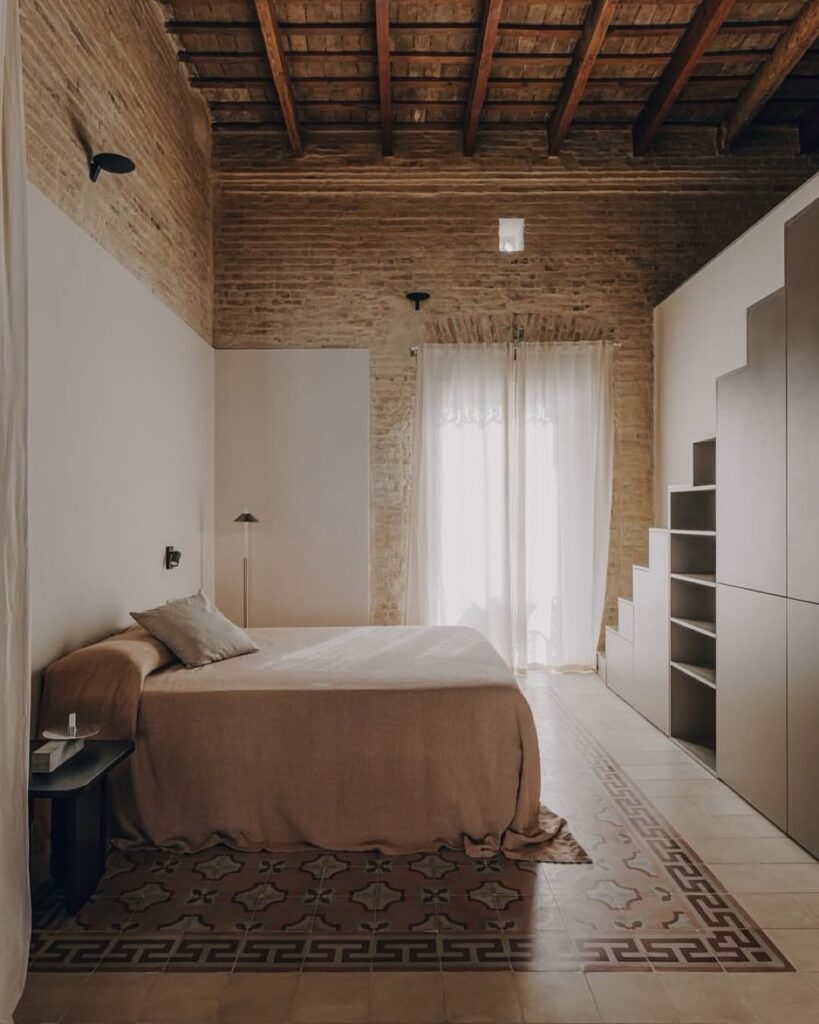
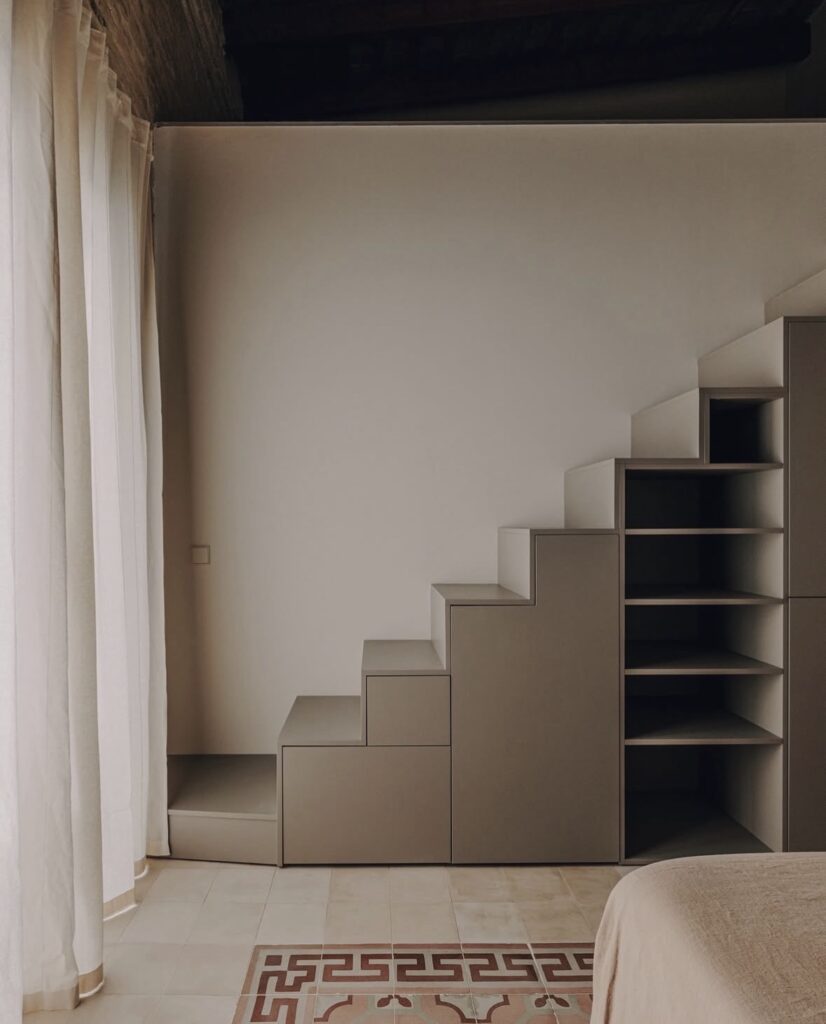
The building’s age alone hinted at hidden treasures — and Daniele’s instincts were right. Beneath layers of outdated finishes and ad-hoc repairs, the team uncovered hydraulic tiles, Catalan vaulted ceilings, and exposed brick structures — all silent witnesses to the home’s century-old story. “In old apartments, demolition often reveals elements of remarkable architectural value,” says the Argentina-born architect. “It sparks curiosity about what lies beneath the layers.”
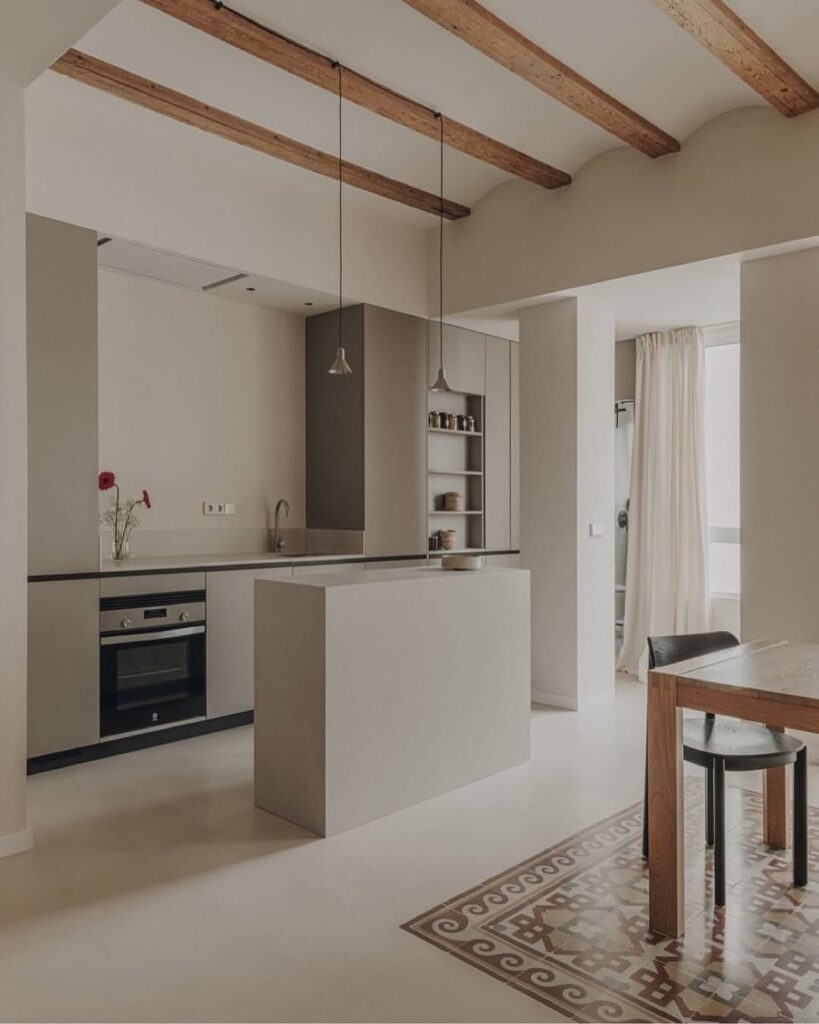
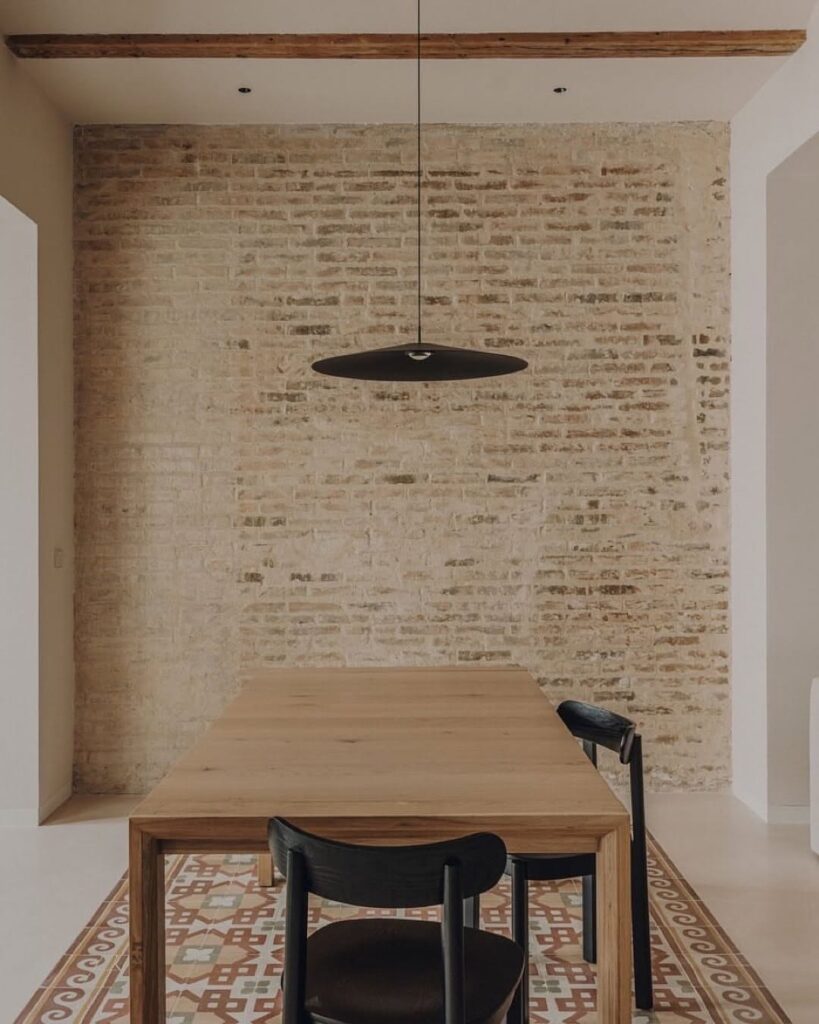
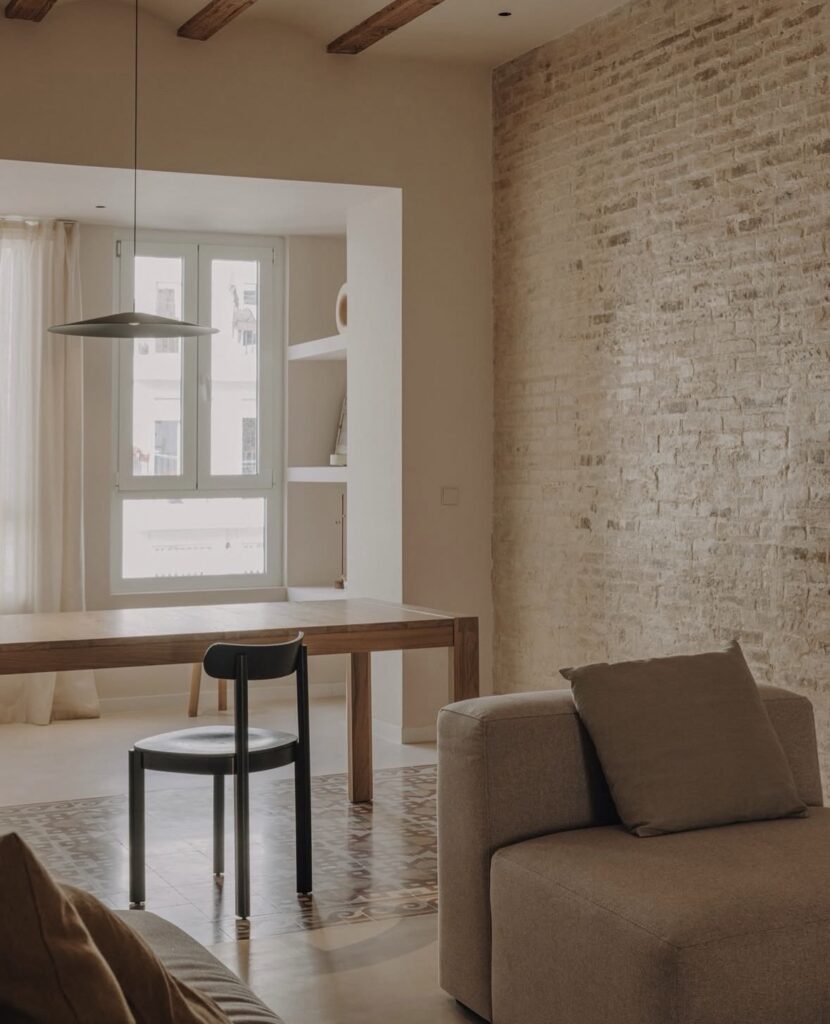
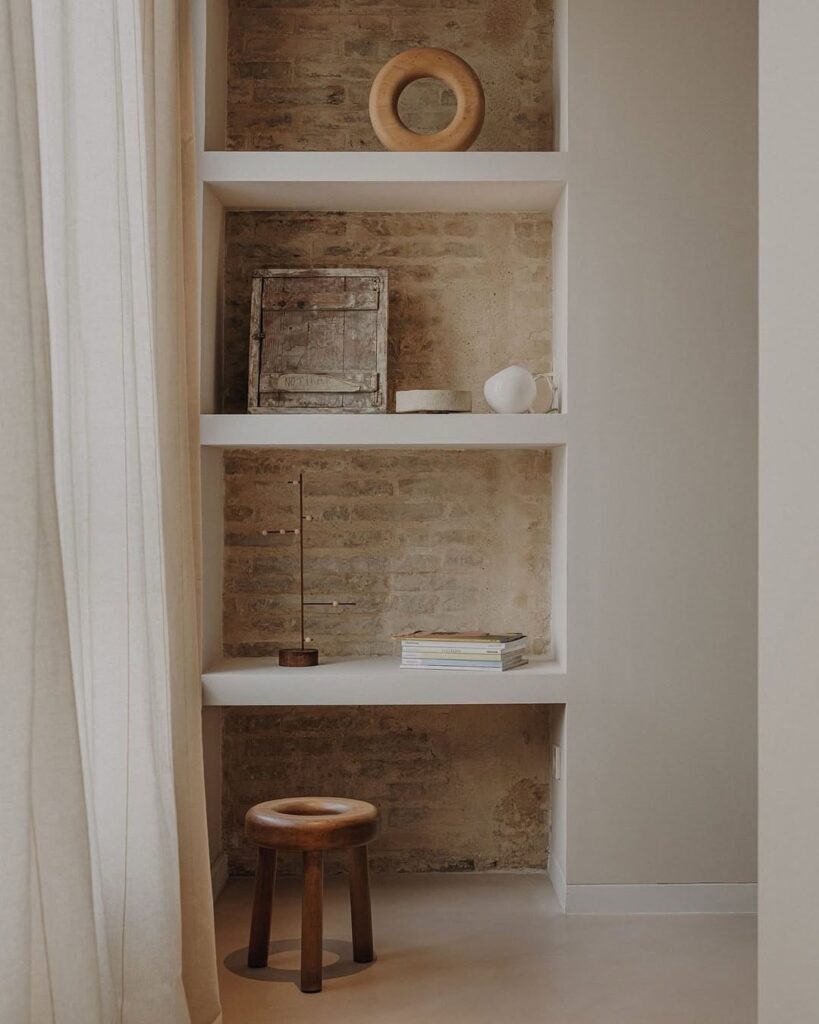
Respecting the Logic of the Space
Instead of imposing a new layout, Daniele and his team at Lucas Daniele Arquitectos approached the project as an act of architectural archaeology — carefully revealing, rather than replacing. The bedrooms were returned to their original location along the façade, where generous ceiling heights and natural light create a sense of openness. The kitchen and living area were reimagined as one continuous flow, forming the social heart of the home, while the bathroom remained where it had always been, honoring the logic of the original structure.
This kind of renovation in Valencia is a dance between eras — a conversation between the building’s history and today’s rhythms of living. Daniele’s approach wasn’t nostalgic, but contextual. The goal wasn’t to rebuild the past, but to integrate its essence into modern life, creating something at once rooted and current.
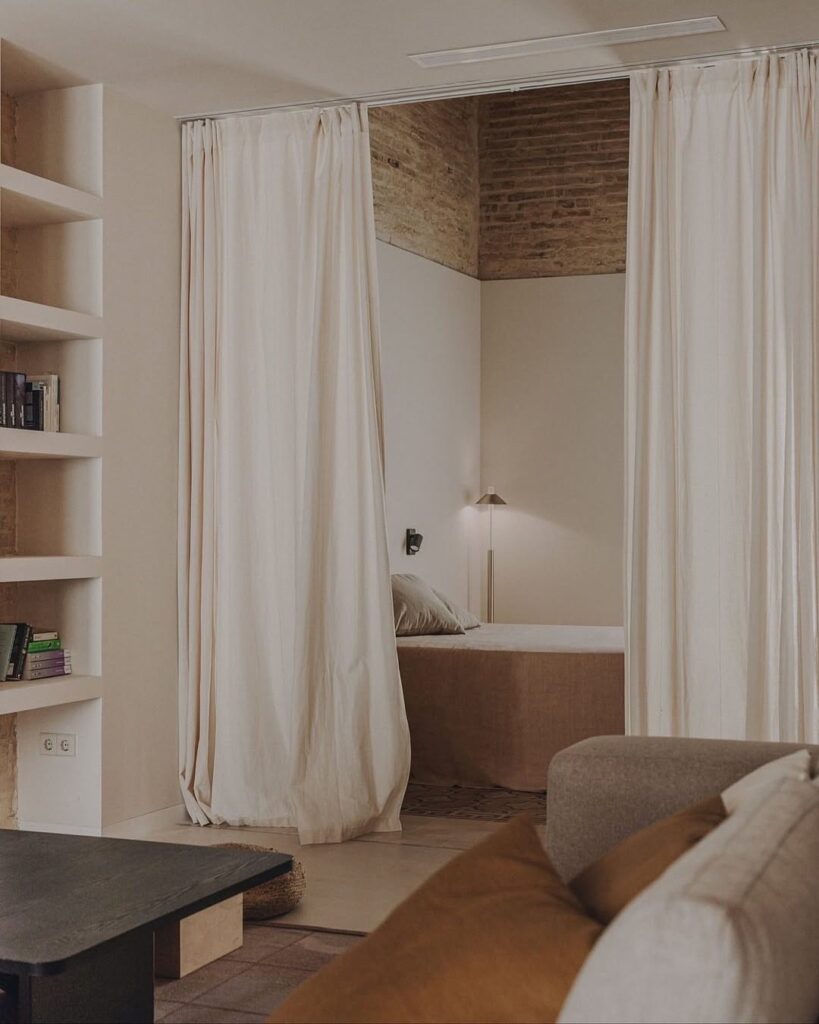

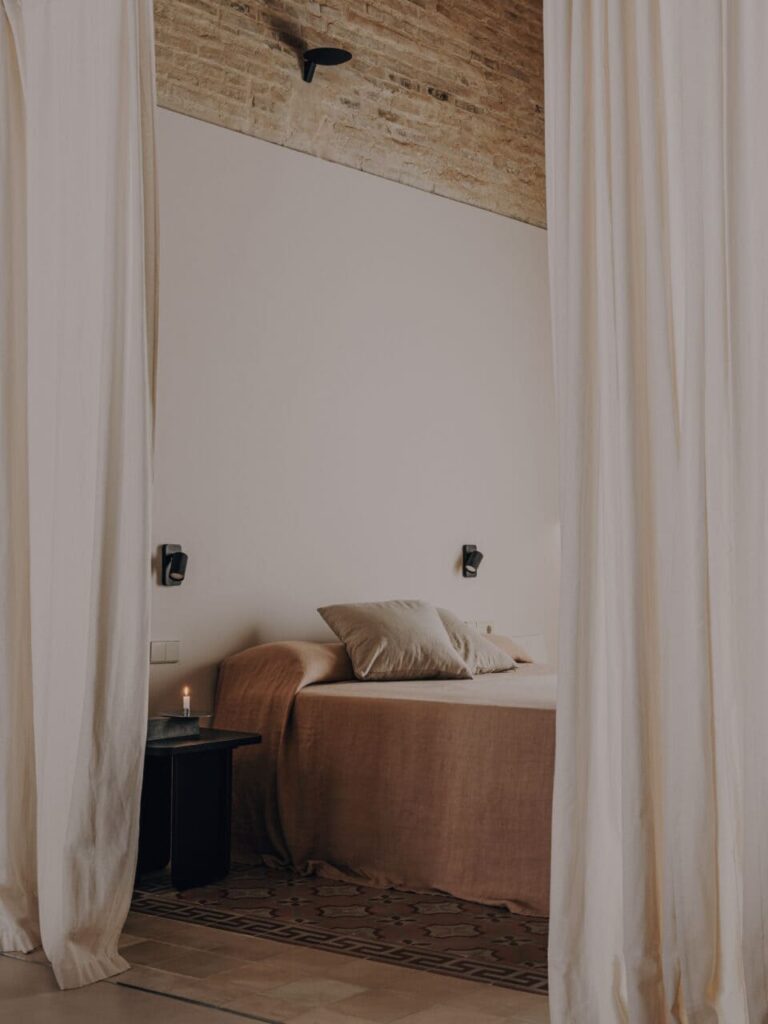

A Dialogue Between Old and New
The result is a home that wears its history proudly. The restored hydraulic tiles bring pattern and color to the neutral palette, their imperfections serving as a reminder of time’s passage. Exposed brick and structural beams were intentionally left visible, not as a decorative gesture but as a way to celebrate the building’s original craftsmanship. Against these textures, clean white walls and simple forms introduce a calm, contemporary balance.
Furnishings were chosen with the same restraint. The modular “Blok” sofa by Kave Home, for instance, offers both volume and lightness — a modern presence that doesn’t compete with the apartment’s historical character. Every piece was selected to support the architecture, not to dominate it.
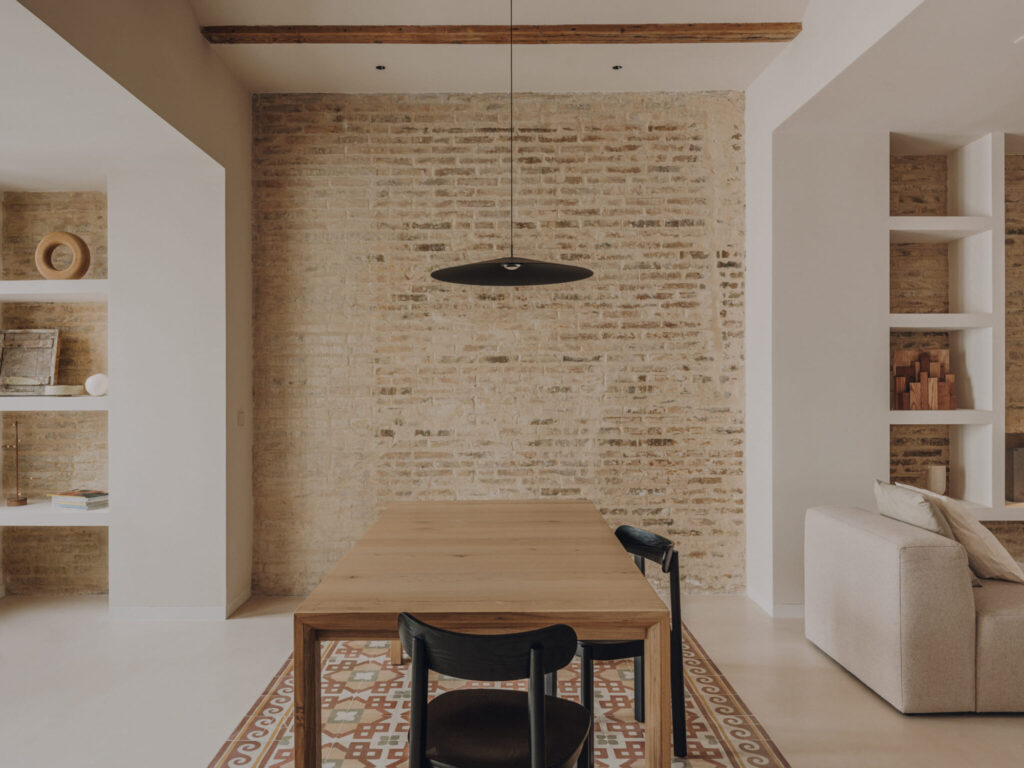
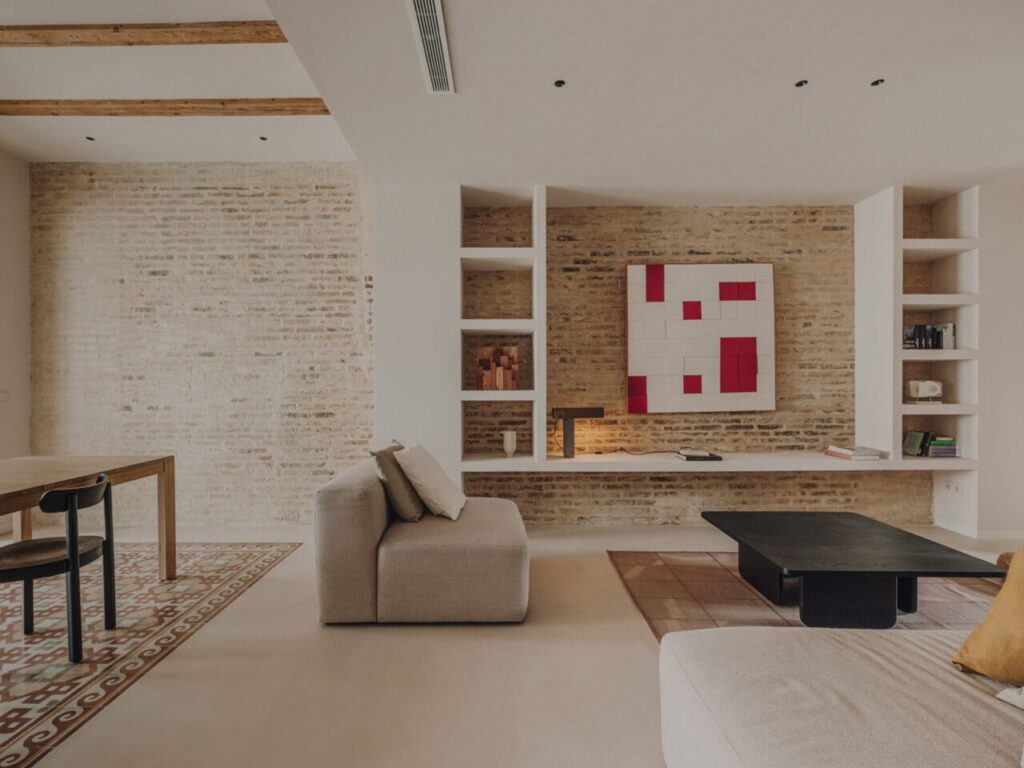
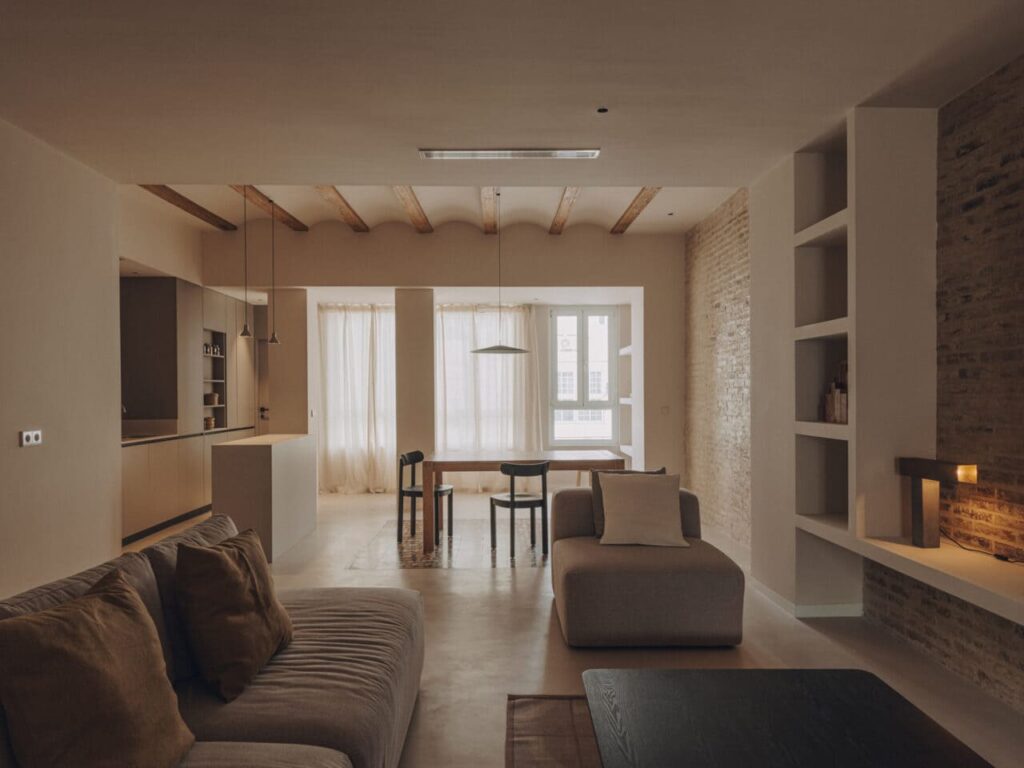
Photography by Carlos Segura captures the apartment’s quiet harmony: light filtering through tall windows, patterns dancing across the floor, and materials that speak of authenticity. There’s a sense that nothing is forced — that the design emerged naturally from the building’s own DNA.
The Beauty of What’s Beneath
What I love about this project is how it reminds us that design isn’t always about adding — sometimes it’s about uncovering. Every layer removed revealed another fragment of history, another clue about how the building once lived. As Daniele notes, curiosity becomes the most important tool in such renovations. It’s not just technical expertise, but empathy — the ability to listen to what the space is trying to say.
In interior design, especially when working with historic architecture, restraint can be a radical act. There’s beauty in keeping things imperfect, in celebrating what time has left behind. It’s a philosophy that resonates far beyond Valencia — a reminder for all of us who work with space that modern comfort and historic integrity don’t need to be opposites.

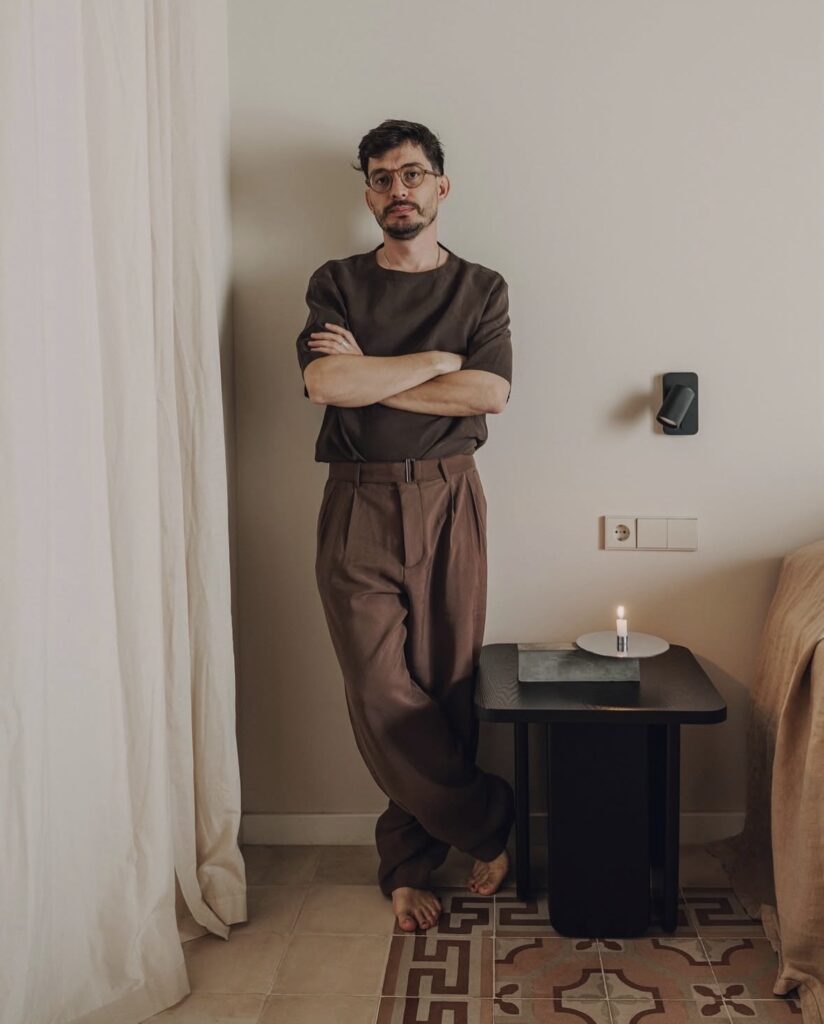
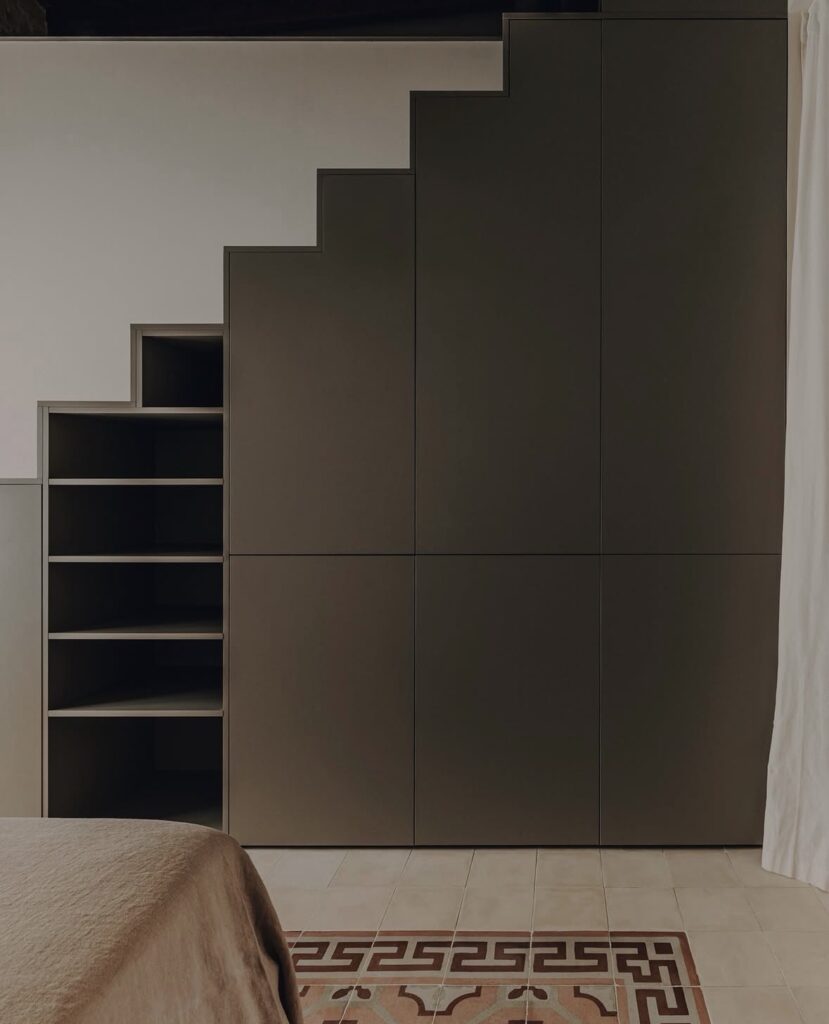
A Lesson for Designers and Homeowners Alike
Projects like this one in the Ruzafa district show that even small apartments — this one only 85 square metres — can hold immense character when treated with care. For anyone considering a historic apartment renovation, the key lies in curiosity: exploring what exists before deciding what should change.
The apartment’s transformation is not just visual; it’s emotional. By preserving its old soul and opening it up to modern living, Daniele has created a space that feels timeless. The project becomes a meditation on coexistence — between eras, materials, and philosophies of design.
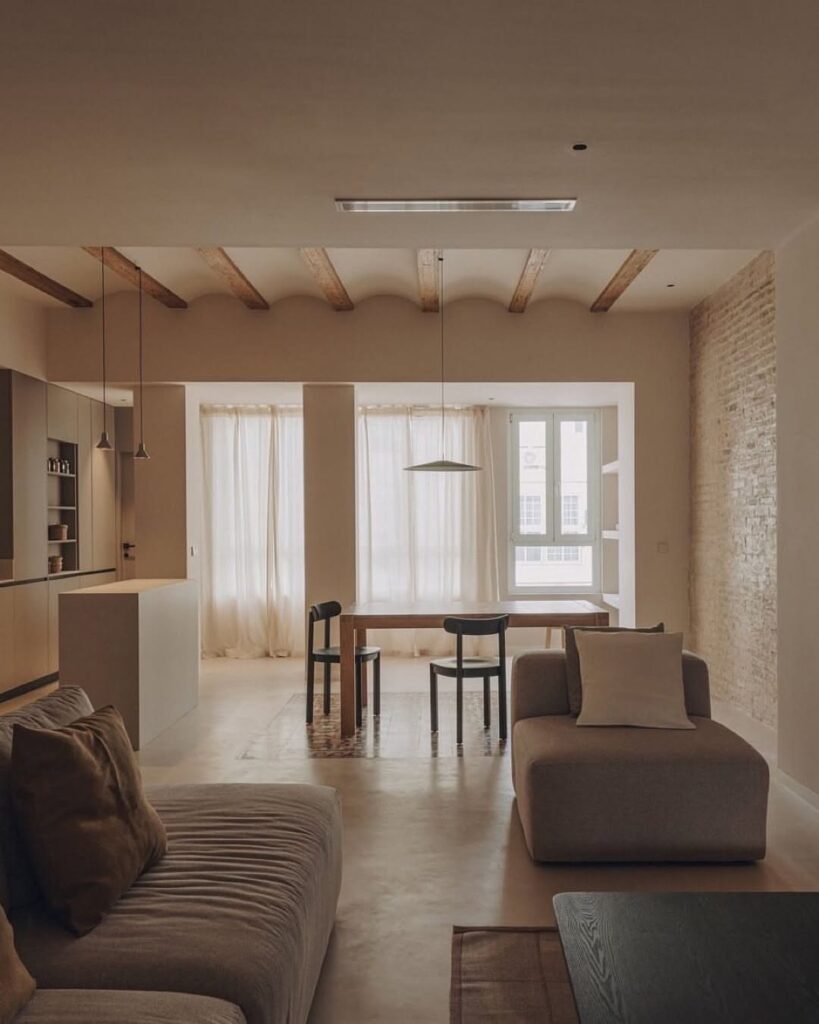
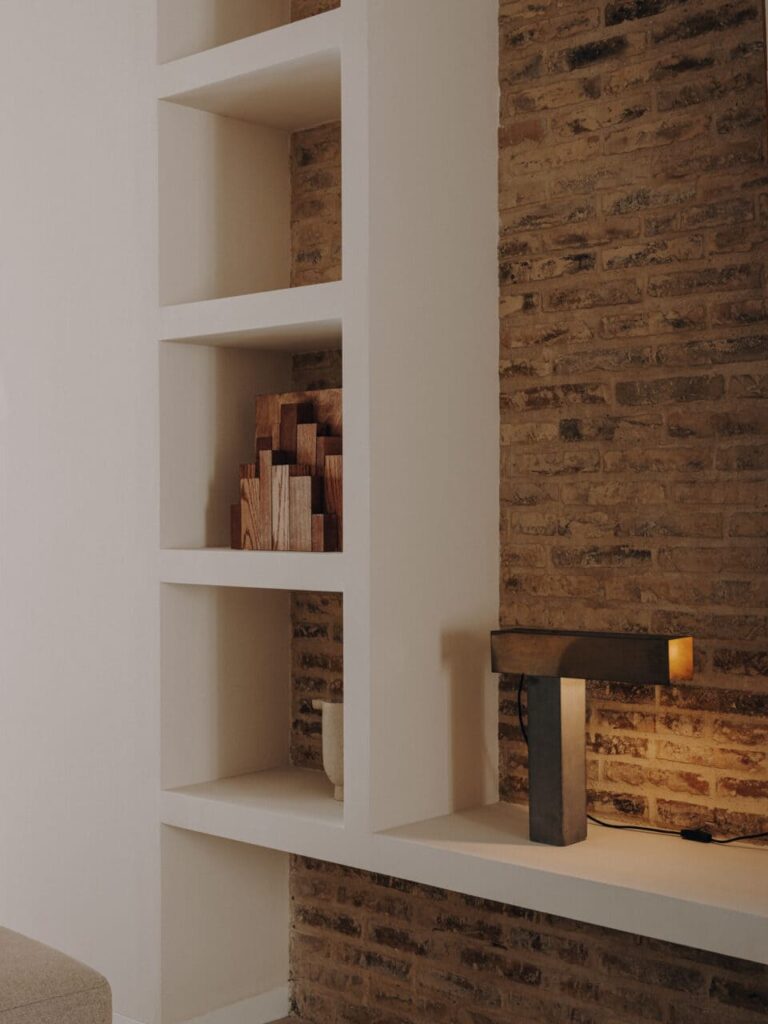
Final Thoughts
In the end, this Valencia home is more than a renovation — it’s a rediscovery. A reminder that good design doesn’t erase history but gives it a new voice. For anyone passionate about architectural heritage and interior design inspiration, this project stands as a quiet yet powerful example: sometimes the most beautiful transformations come not from invention, but from patience and respect for what was already there.
Photo: @ccarlossegura
Architecture: @lucasdanielearquitectos
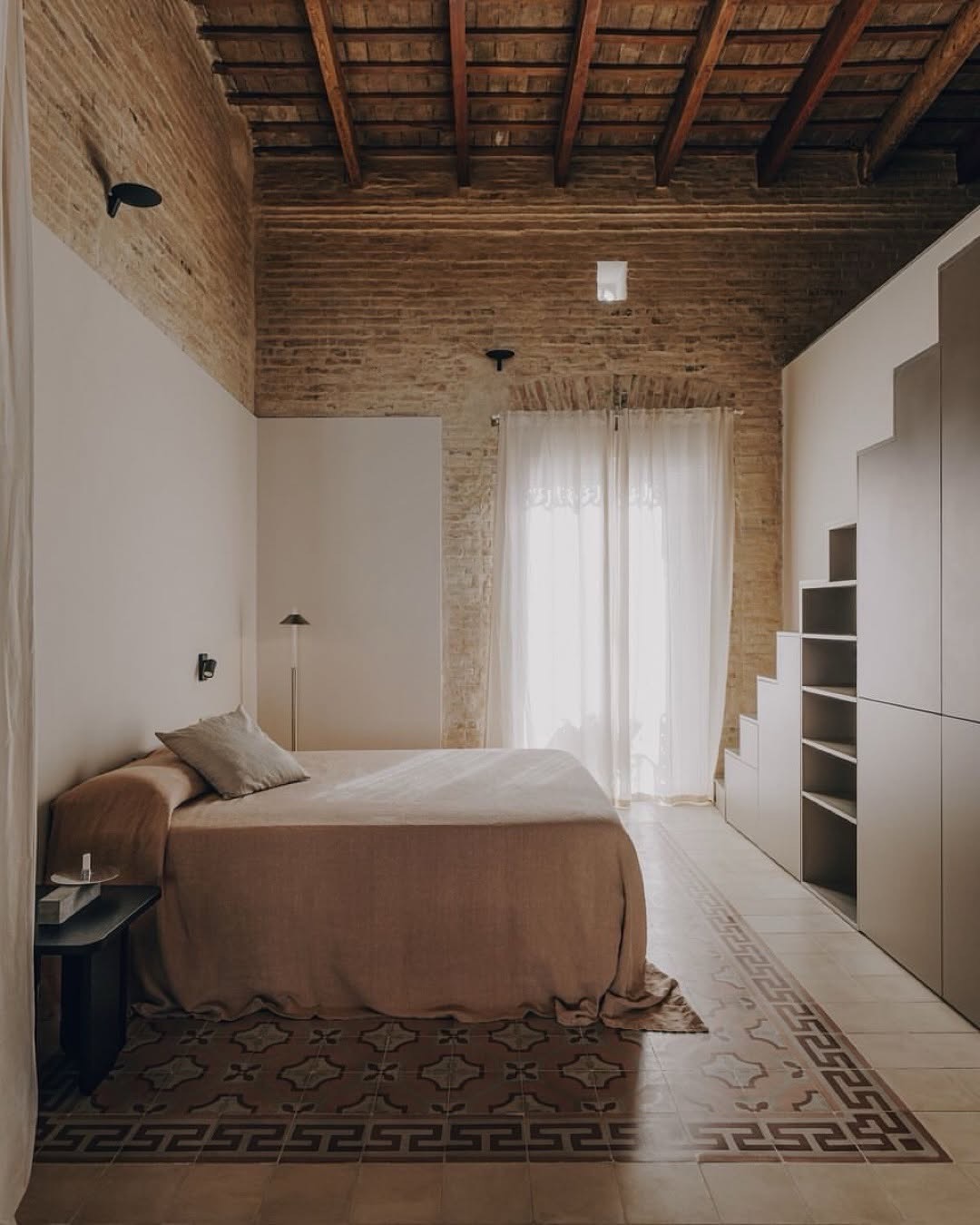
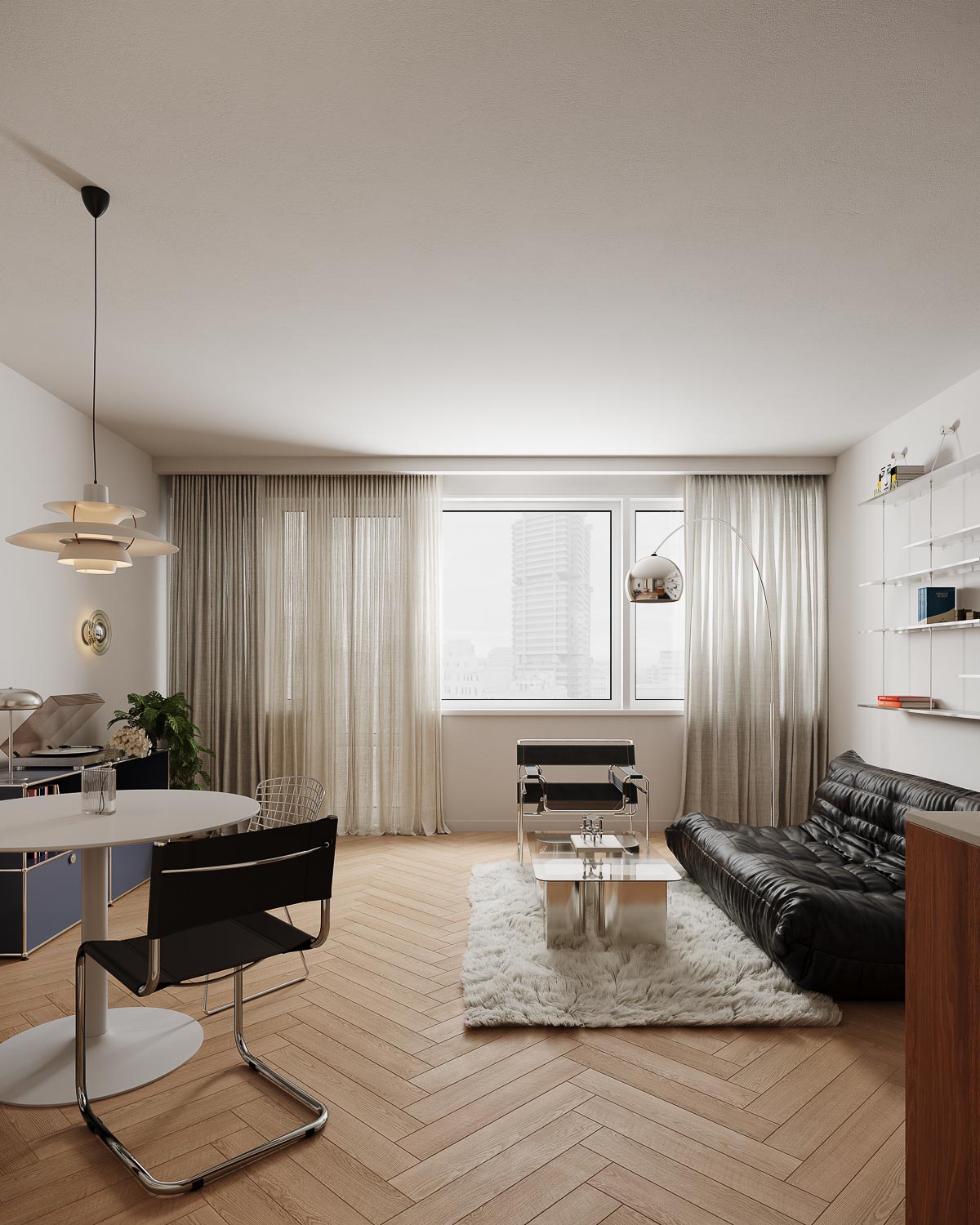
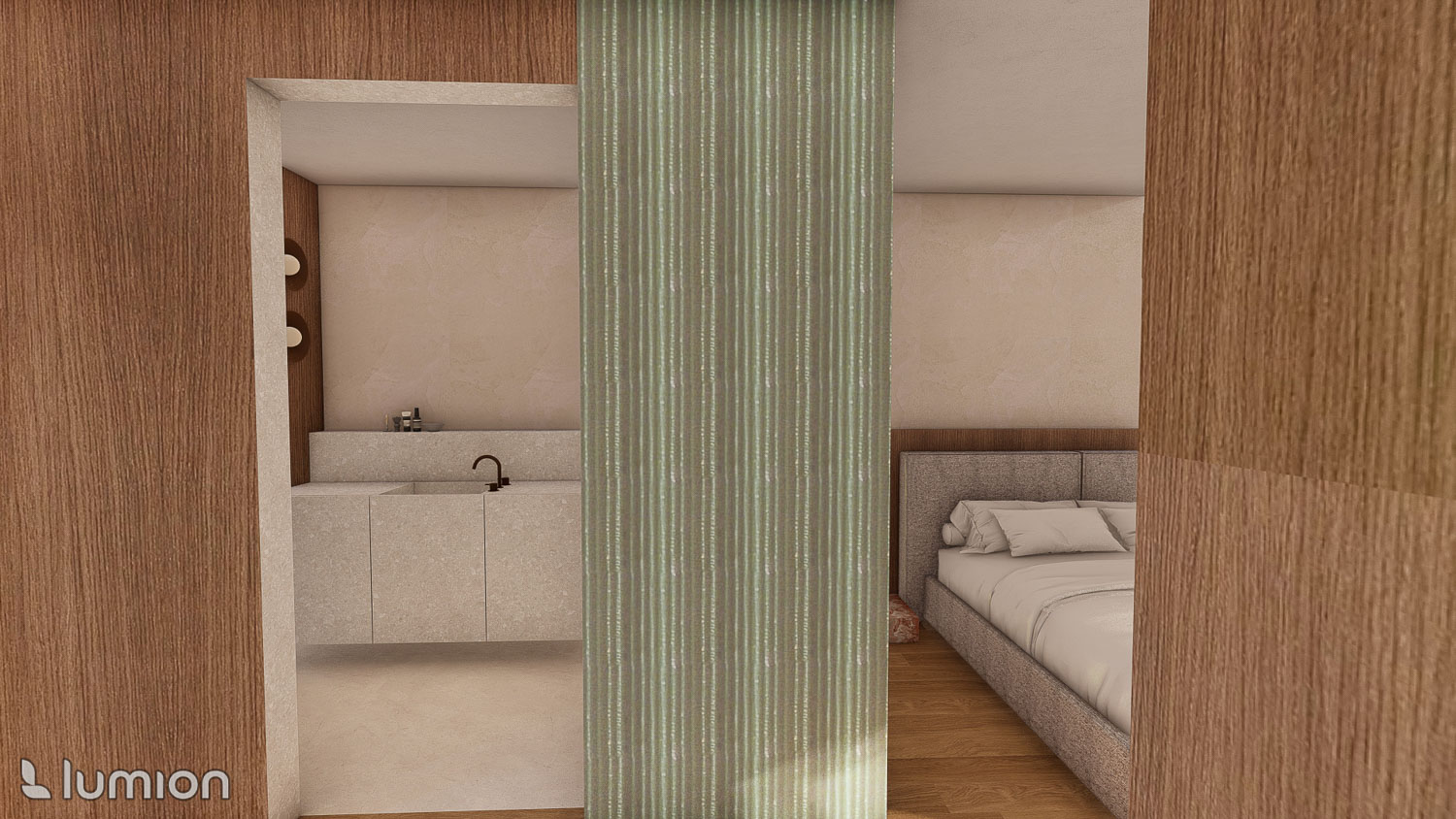
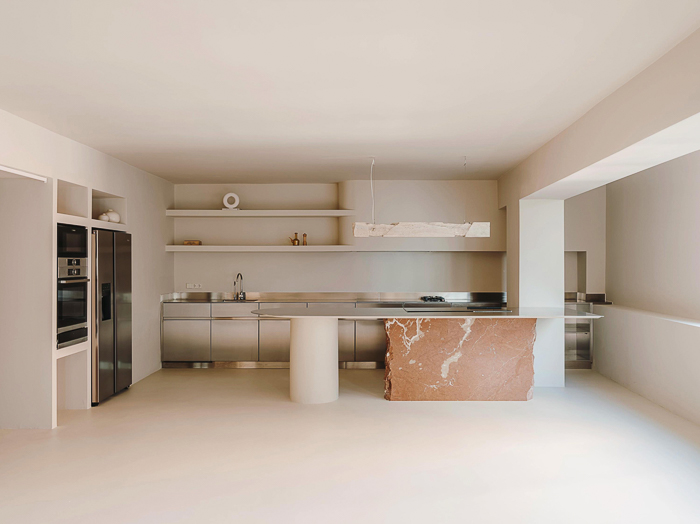

Read the Comments +